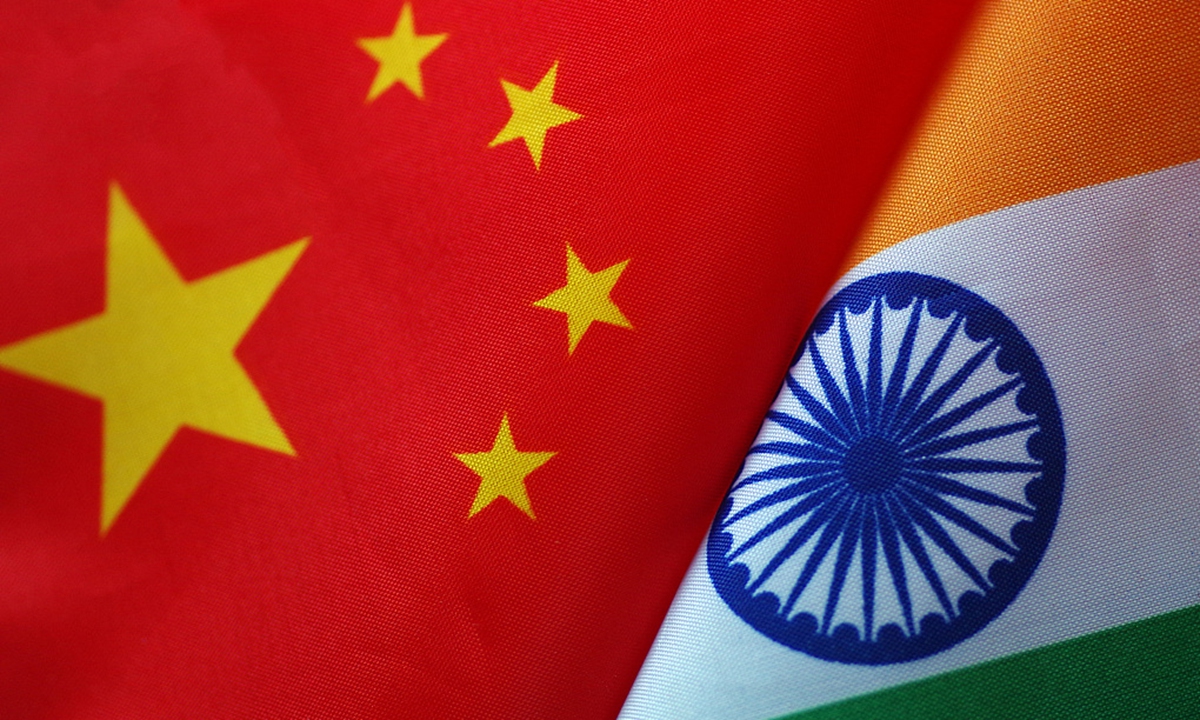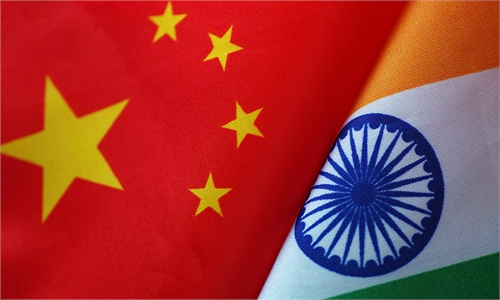China-India negotiations shouldn’t be harassed by Western public opinion: Global Times editorial

China India. Photo: VCG
On Sunday, the 16th round of corps commander level meeting between China and India began at the Moldo-Chushul border meeting point on the Indian side. The two sides then issued a joint press release late at night on Monday, reaffirming their common desires to "maintain the security and stability on the ground in the Western Sector" of the Line of Actual Control (LAC) and to "stay in close contact and maintain dialogue through military and diplomatic channels."Compared with the joint press releases issued after the previous talks, the one for the 16th round meeting particularly emphasized that the two sides continued discussions for the resolution of the relevant issues along the LAC in the Western Sector in a "constructive and forward-looking manner." This releases a positive signal that China-India relations continue to "warm up," and the two sides are working together to resolve the border dispute. The mutual trust between the two sides in resolving border issues is gradually building up again, providing the necessary atmosphere for the two countries to manage the disputes effectively.
The 16th round of talks took place four months after the previous one, the longest gap between China-India military talks since the 2020 Galwan Valley border clash. The delay of the negotiations has led some Western media to give the meetings an early "diagnosis," saying that there is a huge "asymmetry of power" between India and China. They also argue that since the differences between the two sides are "obvious," it was "almost impossible to reach agreement in the discussions." But the facts have proven that China and India are fully capable of dealing with the problems and divergences between them. The joint press release issued on Monday is an indirect response to harassment from US and Western public opinion.
The China-India border standoff has entered its third year, and such a state of confrontation should not continue indefinitely. But the complex border issue cannot be resolved in "one step," and the concrete negotiation process faces even more difficulties and needs more time. China and India are both Asian powers capable of mobilizing national forces to engage in a border conflict. The total populations of the two countries exceed 2.8 billion. In a complex and unstable world, it is evident that keeping friction to a minimal level and maintaining enough patience with differences is more realistic and urgent for both sides than "settling the border dispute once and for all." This also tests the wisdom of both countries.
What needs to be aware of is that there should be no cracks on the China-India border for external forces to drive a wedge. Whenever the Chinese and Indian officers are ready to start negotiations, US and Western public opinion will always begin a new round of mass hype. For example, they keep hyping "India's dilemma" or indirectly agitating New Delhi by claiming it is "afraid of a confrontation with the superpower." Some senior US officials have repeatedly expressed "concerns" over "China's bullying of India." These are all Washington's ploys to woo New Delhi and attempts to entice India due to the geopolitical need to contain China. They have certainly made some Indian elites feel a bit "flattered" for some time, with some even misinterpreting China's desire to maintain peace and stability on the China-India border as a weakness that can be exploited. This is one of the major reasons for the difficulties in current China-India relations.
Therefore, India's tradition of adhering to strategic autonomy is particularly important. The Russia-Ukraine conflict has made some Indian elites calm down and begun to rethink where their national interests lie. Compared with the rampant nationalist sentiments in the past two years, more voices in India calling for restoring China-India relations have been emerging in recent months. In addition, Indian External Affairs Minister Subrahmanyam Jaishankar recently publicly refuted claims that view China-India relations through the prism of Russia-Ukraine conflict, saying India "is perfectly capable of managing" relationship with China. He made clear that he doesn't want external forces to interfere in China-India disputes. The calmness and rationality unleashed by these remarks will be proven correct and to have served India's national interests.
It is worth mentioning that although the US and the West have generally taken an approach to woo India in recent years, they still cannot hide their condescending attitude. Some US media outlets recently criticized India's "confused" policy toward China. The article claims that "New Delhi appears wary of Beijing but unwilling to partner with Washington. These contradictions leave it open to exploitation," and "an economically weak and socially fragile India under Modi runs the risk of getting caught between a hammer and an anvil." This has laid clearly bare what the US and the West have in their mind. The US-led West should be warned that India is not an iron bar to be beaten by others at will, and China will not be an anvil to squeeze India.
Both China and India are emerging economies committed to economic and social development, and the common interests of the two sides far outweigh the differences. Although the border issue is difficult to resolve, it is not hard to figure out what position it should be put to best serve national interests and the common interests of the region.
Human history has never seen two giant neighbors with a population of over 1 billion each like China and India developing together before. When looking at China-India relations, one should have a historical vision broader than the Himalayas. At the same time, we should resist "public opinion harassment" by the US and the West to make China and India be partners rather than rivals. The two should put their destiny in their own hands and realize their own national development and rejuvenation.

